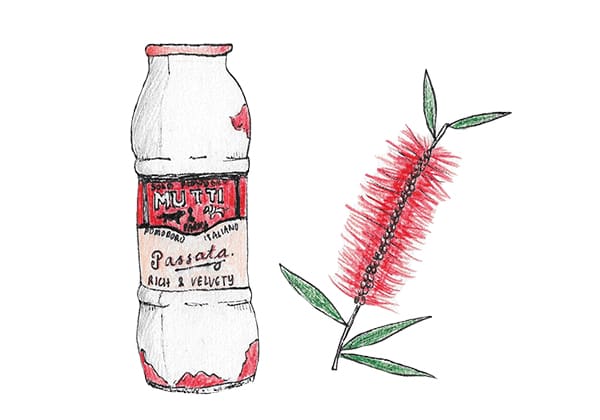This street shares its name with a hundred others, a brief rounded exclamation about some filial relation.
Yet it is this one that we all know, The Run, onto which we spill, sprint and stumble as the semesters amble by.
And it is this one that I love, having taken up a room into which the sun doesn’t entirely shine, in a politely upright house with a little red door.
In normal times, the pavement bears witness to the whispering treads of a million aspiring philosophers, historians, engineers, scientists, coffee-drinkers, flustered workers, and lovers.
Sometimes if I woke up very early it would be almost silent, the wrought iron of the odds across the road yet to be washed in the light of day. Yet, pause a moment and the faraway rush of the city, distant sirens, broken keychains tinkling on schoolchildren’s bags grew closer. The hum that never really ceases.
At night it was the same, hissing of tires along the road punctuated by warm snippets of conversation as commuters shed the day’s problems, leaving disagreements in eucalypt-clogged gutters and speculating about dinner.
Now, the special quiet usually reserved for Sundays has become a gentle, if unsettling reminder of the limbo in which we lie.
This time around I took to collecting Turkish rugs and lay on the floor with them, gathering dust. All my windows and doors are open to the street. Where I’d previously attend to passing shadows hoping they may be a friend scurrying to the train after hours, or the flash of the neighbours skating home, unfamiliar voices or hurried footsteps now just evaporated into the evening air.
The bottlebrushes outside are illuminated glibly by the amber glow of a geriatric street lamp, and at precisely 9pm you can hear the man who goes through the bins beginning his parade down our boulevard, collecting emerald and sienna treasures. It is symbiotic – without him I could never find enough room for stubborn cardboard boxes and tins of old passata.
On my 20th birthday, without a word, he gave me a shiny euro coin. I thought of the 20 years I have spent criss-crossing this city and of the family at number 160-something who haven’t – marking their kitchen doorframe as the years went by, my arrival nearly coincidental with their downsizing departure. I had hoped to find a home here as they did, but perhaps another time.
I often think about what they would’ve seen from their own wrought iron ledges, dancing on the periphery of the Block as the millenium ticked over. Part of me wants to believe they fought as many did in the years before, drawn to Lawson as a conduit and marker of the struggle of First Nations activists. But I do wonder whether they too are part of the group spoken of by grandparents at Christmas parties in vaguely consolatory tones, sighs of the gentrifiers, the yuppies and family guys.
I’m sure they’ve left now, as I have, perhaps to a place where the ring of cicadas overwhelms conversations, if there were any to hear. If I wanted to I think I could find out who they are, but something seems to tell me no.
Best to leave that for only Lawson to know, to have and hold them like it did me, but to ultimately let us go.





